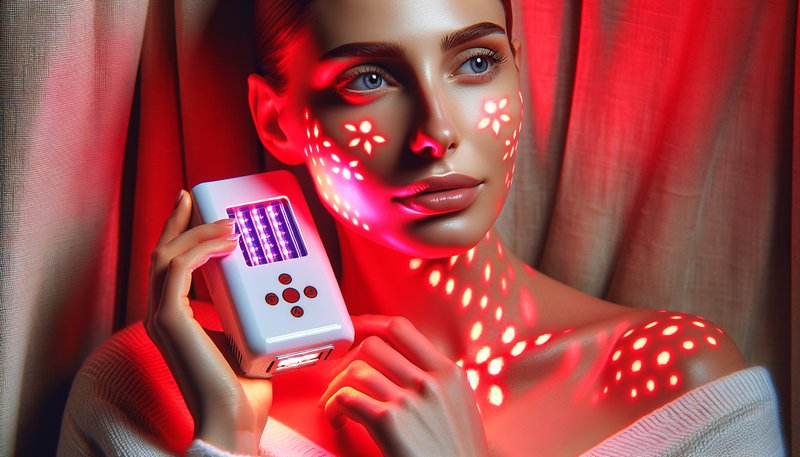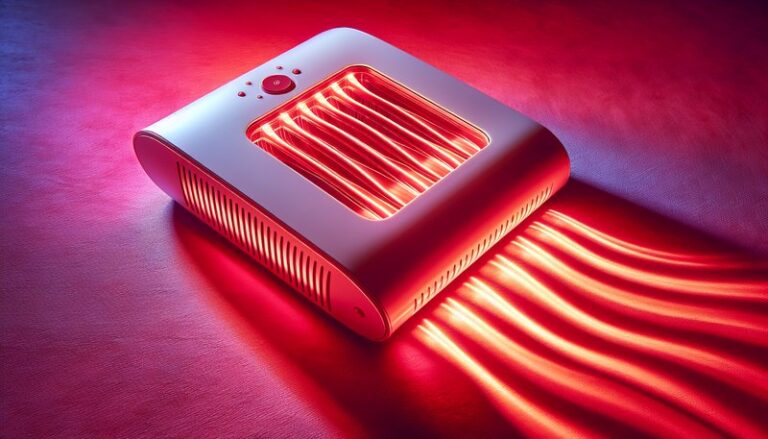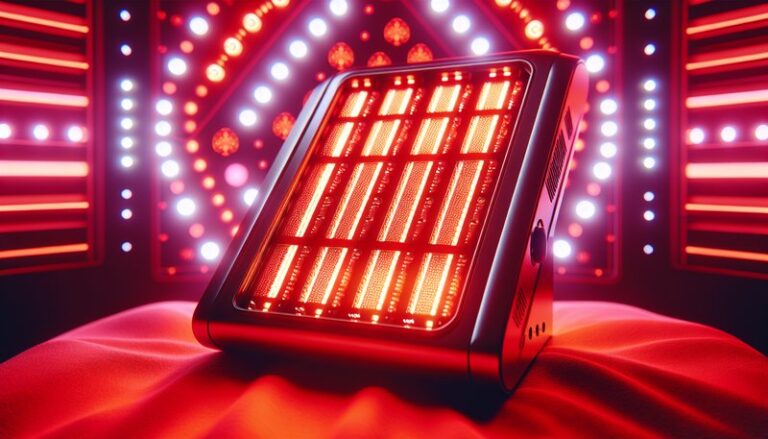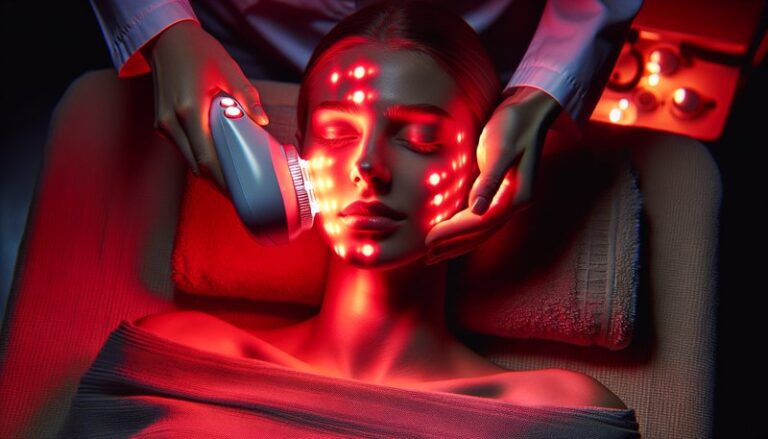How Does Red Light Therapy Help Rosacea?
How Does Red Light Therapy Help Rosacea?
Have you ever wondered how certain therapies can alleviate skin conditions like rosacea?
Red light therapy (RLT) has garnered significant attention for its promise in treating a variety of skin issues, including rosacea. In this article, we’ll explore what red light therapy is, its benefits, the feasibility of implementing it, considerations before starting treatment, alternative options, and whether it is recommended for rosacea sufferers.
Key Takeaways
- Red light therapy can reduce inflammation, redness, and skin irritation associated with rosacea.
- It has a non-invasive procedure that promotes healing and rejuvenation of the skin.
- While generally safe, it is essential to consider individual skin types and treatment settings before starting therapy.
What is Red Light Therapy?
Red light therapy is a non-invasive treatment using low-level wavelengths of red light to penetrate the skin. This therapy aims to promote healing and reduce inflammation by stimulating cellular processes.
Red light therapy works by energizing cells, promoting collagen production, and enhancing blood circulation within the treated area. It’s commonly utilized in dermatology to address issues such as acne, scars, and the visible effects of aging, making it a promising option for those with rosacea.
Mechanism of Action
Red light therapy operates on a cellular level, where exposed cells absorb the light and convert it into energy, leading to improved cellular regeneration. This process is particularly beneficial for skin conditions characterized by inflammation, such as rosacea.
What are the Benefits of Red Light Therapy?
Understanding the benefits of red light therapy can help individuals with rosacea make informed decisions about their treatment options.
Reduces Inflammation and Redness
One of the primary benefits of red light therapy is its ability to diminish inflammation and redness associated with rosacea. Studies have shown that RLT can lower the levels of pro-inflammatory cytokines in the skin, helping to calm flare-ups.
Enhances Skin Healing
Red light therapy accelerates the skin’s healing processes. By stimulating collagen production and increasing circulation, this therapy can help repair damaged skin and improve overall tone and texture, making it an excellent adjunct treatment for rosacea.
Non-Invasive and Painless
Unlike many traditional treatments for rosacea, such as topical steroids or oral medications, red light therapy is non-invasive and painless. Patients can benefit without the side effects often associated with more aggressive treatments.
Additional Benefits
- Encourages skin rejuvenation, leading to a more youthful appearance.
- May reduce the overall number of flare-ups over time.
- Can be combined with other treatments for enhanced effectiveness.
Is it Possible to Use Red Light Therapy for Rosacea?
Yes, it is indeed possible to utilize red light therapy as a treatment for rosacea. Many dermatologists recommend it due to its effectiveness and relative safety profile.
Find all the details in Does Red Light Therapy Cause Pain?
What are the Advantages of Using Red Light Therapy for Rosacea?
Red light therapy offers multiple advantages for individuals suffering from rosacea:
Enhanced comfort for patients seeking relief from painful and sensitive skin conditions.
Fewer side effects compared to traditional medications, making it suitable for those with sensitive skin.
Accessibility in both professional settings and home-use devices allows individuals to choose a convenient option.
What are the Disadvantages of Using Red Light Therapy for Rosacea?
Despite its many benefits, there can be some challenges associated with red light therapy:
Not all devices are created equal; the quality and wavelength of light can significantly affect treatment outcomes.
Initial costs for professional treatments can be high, and insurance may not cover it.
Results can vary widely depending on individual responses, and some may require multiple sessions to observe significant improvement.
What are the Things to Consider Before Starting Red Light Therapy?
Before beginning red light therapy for rosacea, it’s crucial to take several factors into account.
Consultation with a Dermatologist
Consulting a dermatologist is vital. They can help determine if red light therapy is a suitable treatment for your specific condition and skin type.
Skin Type and Sensitivity
Consider your skin type and sensitivity. Some individuals may react differently to light therapy, and understanding your specific needs is essential for achieving optimal results.
Check out our analysis Is Phototherapy Same As Red Light Therapy?
Treatment Frequency and Commitment
Be prepared for the scheduling commitment that comes with therapy. Regular sessions may be required for noticeable improvement, so understanding the time and frequency involved is essential.
Equipment Quality
If opting for at-home devices, research the quality and specifications of the equipment to ensure it is effective for treating rosacea.
What are the Alternatives to Red Light Therapy?
In addition to red light therapy, several alternative treatment options for rosacea exist.
Topical Treatments
Topical medications such as metronidazole or azelaic acid can help reduce redness and control flare-ups. Discussing options with a dermatologist can lead to effective management strategies.
Oral Medications
In more severe cases, oral antibiotics (such as doxycycline) may be prescribed to reduce inflammation and treat persistent flare-ups effectively.
Laser Treatments
Various laser treatments, like pulsed dye laser therapy, target blood vessels and can significantly improve redness and visibility of small capillaries associated with rosacea.
Lifestyle and Dietary Changes
Adopting a balanced diet, reducing alcohol consumption, and avoiding known triggers like spicy foods can also help manage symptoms effectively.
Conclusion: Is it Recommended to Use Red Light Therapy for Rosacea?
Red light therapy presents a promising option for those suffering from rosacea. With its ability to reduce inflammation, enhance skin healing, and provide a non-invasive treatment approach, it has earned recognition in dermatological practices. However, it is crucial to consult with a healthcare provider to understand whether RLT fits your specific needs. By considering the advantages, disadvantages, and alternatives, individuals can make informed decisions about managing their rosacea effectively.
Frequently Asked Questions
What is the typical duration of red light therapy sessions?
Most sessions last between 10 to 20 minutes, depending on the device and treatment protocol used. Regular sessions are usually recommended for the best results.
Are there any side effects associated with red light therapy?
Generally, red light therapy is safe with minimal side effects. Some individuals may experience temporary redness or sensitivity in the treated area, which usually subsides shortly after treatment.
How soon can I expect to see results?
Results vary from person to person, but many report seeing improvements in redness and skin condition after several sessions. Continuous treatment may yield the best long-term results.
Can red light therapy be used in conjunction with other treatments?
Yes, red light therapy can be effectively combined with topical and oral treatments for rosacea. However, it is essential to consult with a dermatologist before doing so.
Is at-home red light therapy effective?
At-home devices can be effective, but the quality and power of the light vary. It’s important to choose a reputable product designed for treating skin conditions.
By exploring red light therapy’s benefits, feasibility, and alternatives, individuals suffering from rosacea can find a treatment that works best for their unique skin concerns.






